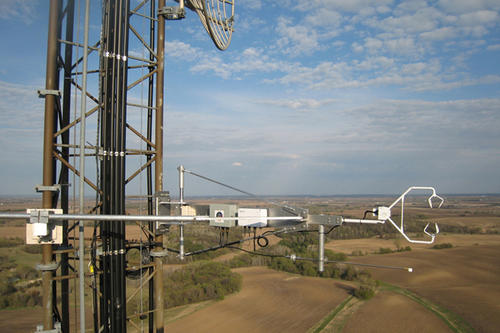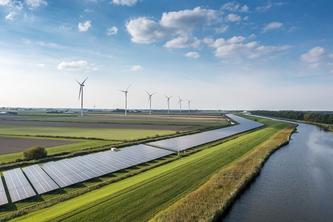
New research from the University of Minnesota, published in Proceedings of the National Academy of Sciences, shows nitrous oxide emissions, a greenhouse gas, may get worse as the climate warms. While not as prevalent in the atmosphere as carbon dioxide, a nitrous oxide molecule is nearly 300 times more effective in terms of warming the planet.
The University of Minnesota’s Biometeorology Group, including Drs. Tim Griffis, John Baker, Dylan Millet, Rodney Venterea and Ph.D. student Zichong Chen, studied the atmosphere and nitrous oxide emissions from a tower 200 meters in the air in Minnesota. The gas comes from many sources, including emissions from farm fields and associated runoff. For six years they recoded the nitrous oxide levels every hour. The highest levels were recorded during the warmest years. In 2012, the warmest year of the study, emissions were nearly 50 percent higher.
Current models do a relatively good job of estimating nitrous oxide emissions from direct sources, like fertilizer application to fields. The team’s research found that indirect emissions from streams and ditches were also a large source that showed significant seasonal and internal variability. Using long-term measurements and modeling, they suggest that emissions will increase significantly as temperature and precipitation increase.
Adding to the problem is the increased heavy rains associated with a warming world. More rain means more nitrogen running off into waterways where it can be converted into nitrous oxide. In Minnesota and many other areas, rain is increasing in the spring when fertilizers are applied, worsening the problem. The bacteria that convert the nitrogen into nitrous oxide are also more active in warmer and wetter soils.
Griffis hopes understanding the true extent of the problem can not only make climate models more accurate but also spur solutions, including ways to use nitrogen more efficiently.
The Biometeorology Group is part of the Department of Soil, Water, and Climate at the College of Food, Agricultural, and Natural Resources. Its mission is to advance the understanding of Earth system processes and the interaction among land, atmosphere, and water and improve people’s lives and our world through teaching, research and extension.
Full paper: “Nitrous oxide emissions are enhanced in a warmer and wetter world", T.J. Griffis, Z. Chen, J.M. Baker, J.D. Wood, D.B. Millet, X. Lee, R.T. Venterea, and P.A. Turner, (Proceedings of the National Academy of Sciences of the United States of America, 2017, doi: 10.1073/pnas.1704552114, early view
- Categories:
- Agriculture and Environment





